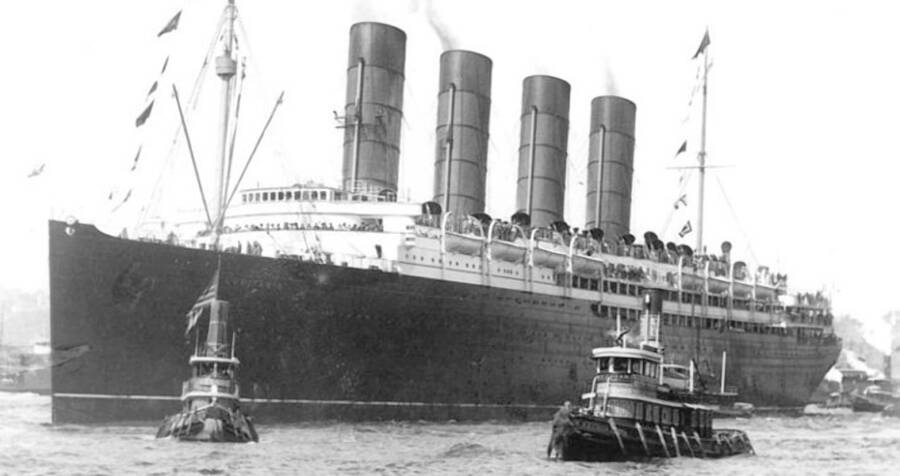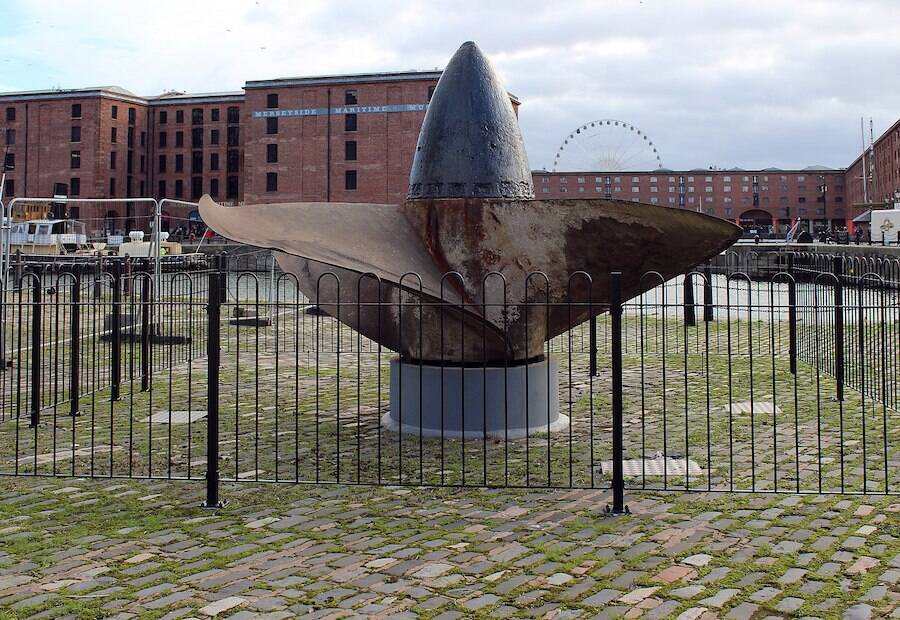How The Shipwreck Of The RMS Lusitania Changed World War I

Wikimedia CommonsThe RMS Lusitania in 1907, eight years before its fatal sinking.
When the RMS Lusitania set out from New York City toward Liverpool, England, on May 1, 1915, it sailed into dangerous waters. World War I was in full swing in Europe, and the vessel had been warned about the threat of German U-Boats. Tragically, its captain didn’t heed those warnings.
Like the RMS Titanic, the RMS Lusitania was considered luxurious and technologically advanced for its time. The ocean liner had set a record for the fastest Atlantic crossing in 1907 and had a number of amenities like a first-class dining saloon, a first-class lounge, and a veranda cafe.
But that meant little in the face of German submarines.
On May 7th, as the RMS Lusitania sailed toward its destination of Liverpool, a German U-Boat hit its starboard side with a torpedo near the coast of Ireland. Moments later, a second explosion rocked the vessel.
“When we were about half-way through our lunch, we heard a terrible crash,” said RMS Lusitania survivor George Scott, according to the Irish Times.
“The vessel trembled first, and then listed to one side…. when we got on deck, there was a great deal of panic.”

Phil Nash/Wikimedia CommonsA propellor that was later recovered from the severely collapsed shipwreck of the RMS Lusitania.
Within 20 minutes, the grand ship had disappeared beneath the ocean waves. Of the 1,959 passengers on board, 1,198 drowned in the frigid water.
Germany claimed that the ship was merely a casualty of the ongoing conflict — and they had, after all, given warnings about sailing in British waters shortly before the RMS Lusitania had departed from New York.
What’s more, Germans insisted that the RMS Lusitania was a legitimate target since it was also carrying rifle ammunition and shells.
But it was a different story in the United States. One hundred and twenty-eight of the dead were American citizens, which pushed many in the U.S. to rethink the country’s stance on neutrality during World War I.
Though the U.S. did not immediately join the war, the sinking of the ship played a vital role in turning public opinion against the Germans. In that way, the RMS Lusitania is a shipwreck that may have changed the world.





